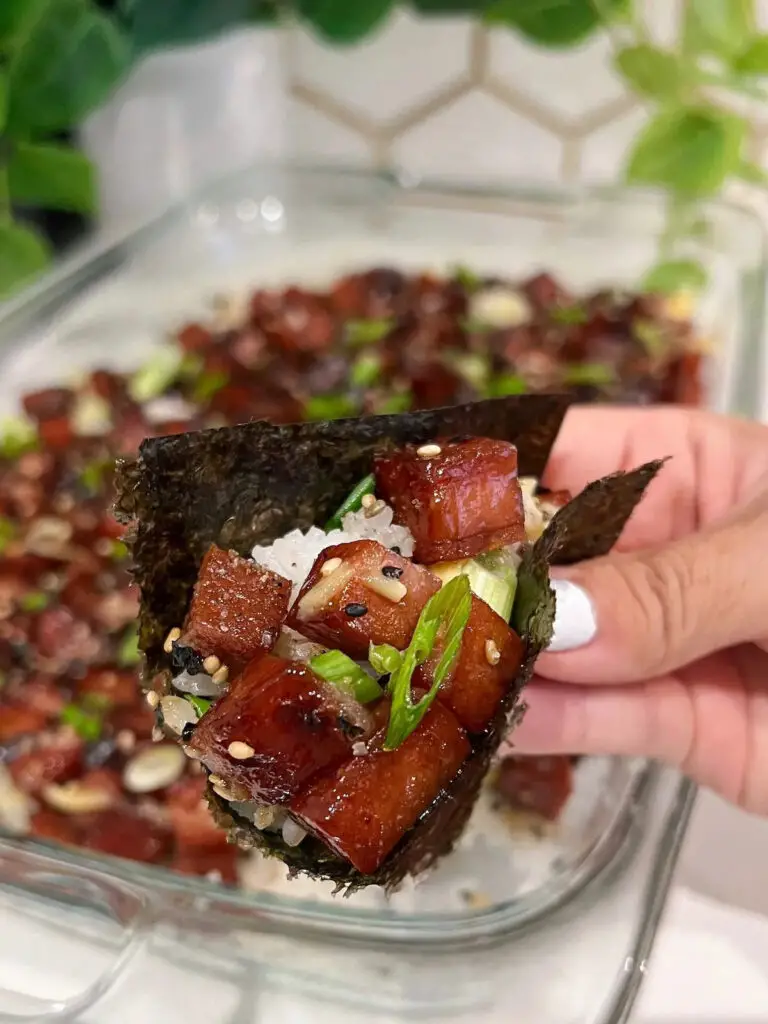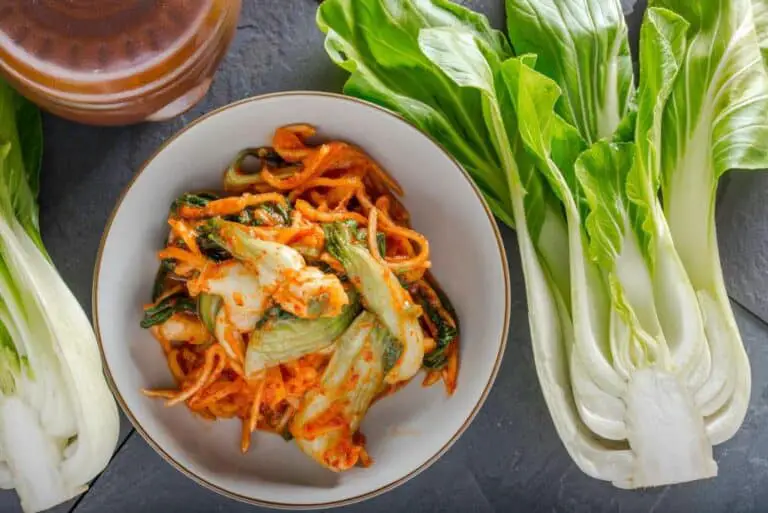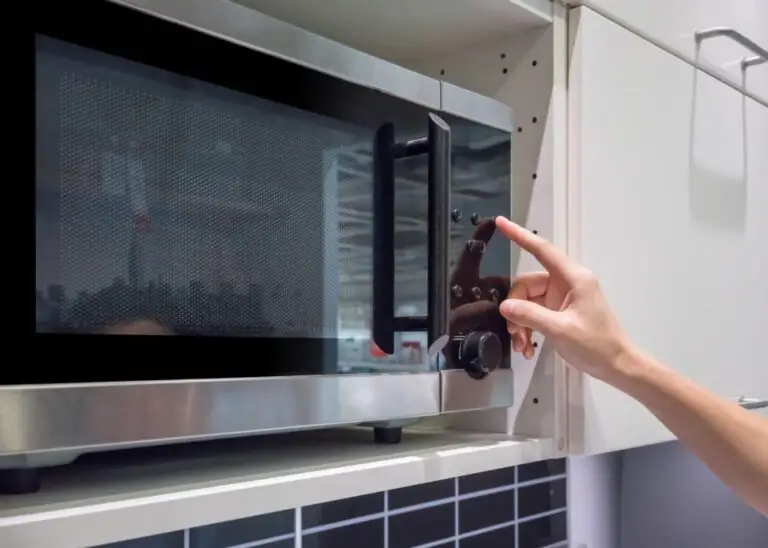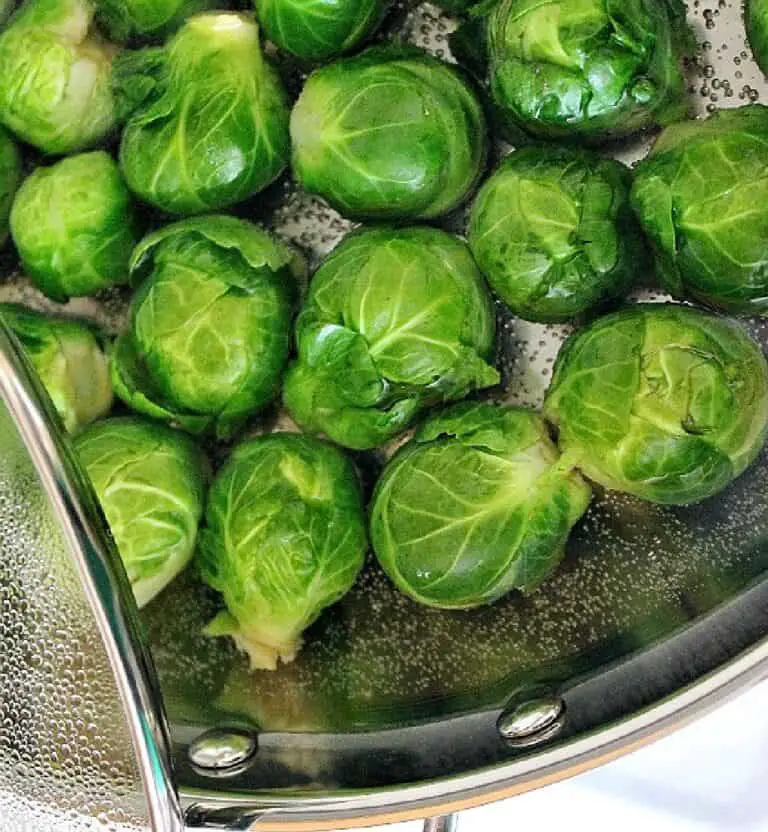How to Reheat Cream Sauce without Separating: Keep It Smooth and Silky
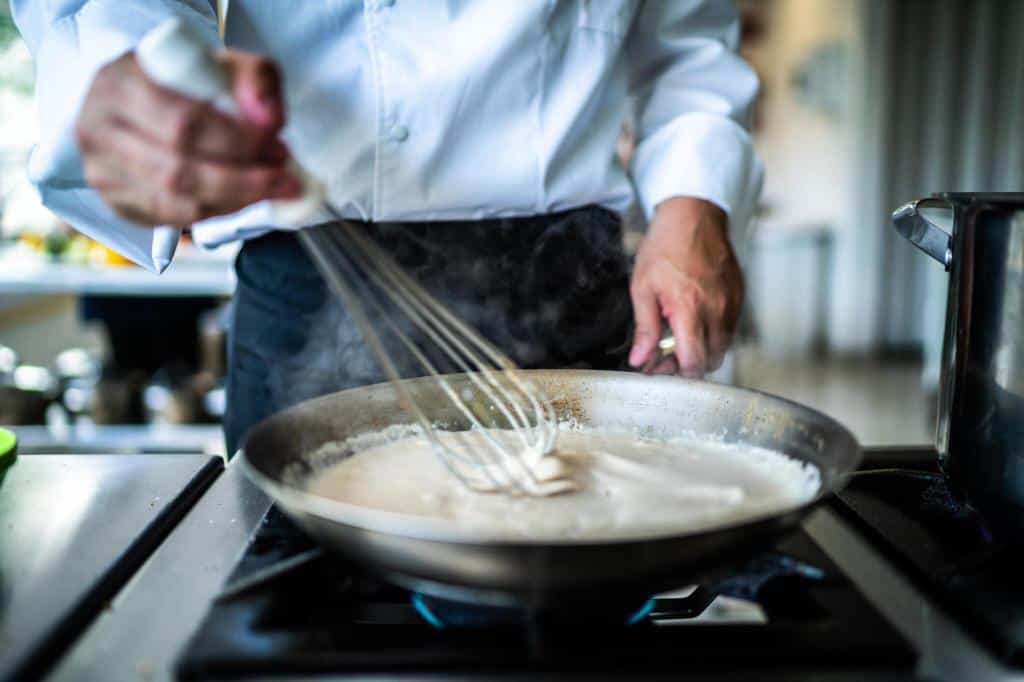
There’s nothing quite like the velvety smoothness of a perfectly made cream sauce. Whether it’s drizzled over pasta, poured onto vegetables, or used as a base for soups and stews, the rich flavor and luxurious texture can elevate any dish to new heights.
But what happens when that dreamy consistency is lost in the reheating process? We’ve all experienced it – that dreaded separation where your once creamy masterpiece turns into a curdled mess. Don’t fret! In this article, we will unlock the secrets to reheating cream sauce without ever having to worry about separation again.
Preserving the delicate nature of cream sauce during reheating is paramount. It requires precision, patience, and an understanding of why separation occurs in the first place. The issue stems from two main culprits: heat and agitation. Heat can cause proteins in dairy products to denature and coagulate. This results in an unappetizing, clumpy mess instead of a smooth finish.
But fear not; there are techniques you can employ to overcome these challenges and maintain that delightful silky consistency every time you reheat your precious cream sauce treasures. Stick around as we delve into unconventional methods, debunk common myths, and uncover alternative approaches that will revolutionize your reheating game forever!
Why Reheating Cream Sauce Can Lead to Separation?
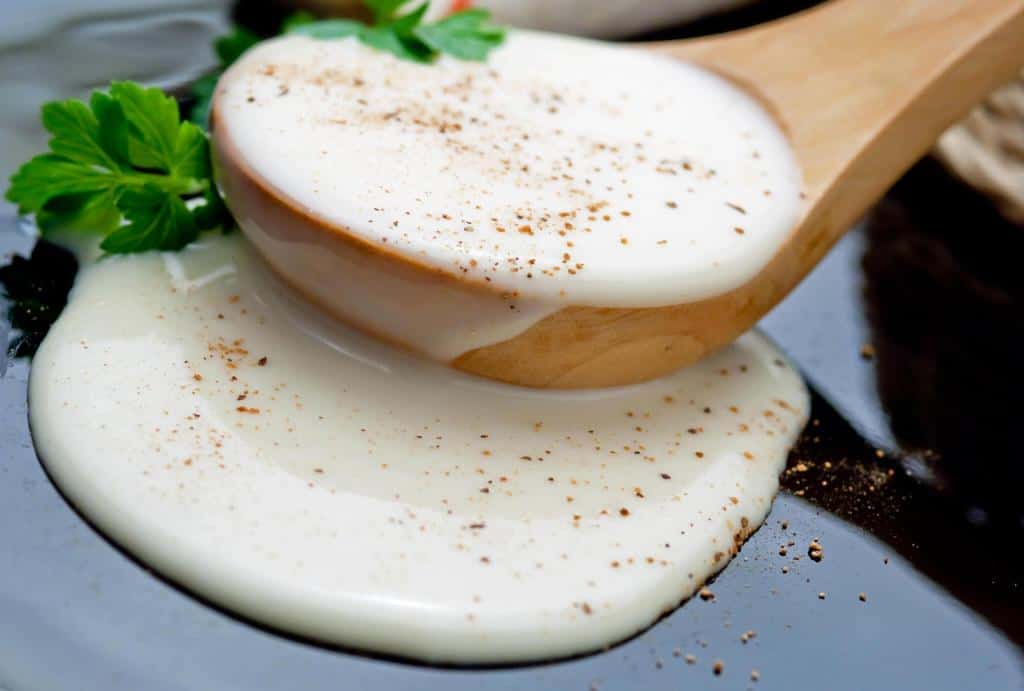
Reheating cream sauce can lead to separation due to the composition of the sauce. Cream sauce is made from a combination of cream, butter, and sometimes flour. When heated, the proteins in the cream can coagulate and separate from the fat, causing the sauce to become lumpy. Additionally, if the sauce is heated too quickly or at too high a temperature, this can also cause it to separate.
The heat causes the fat molecules in the cream to break down and release water, which then evaporates and leaves the fat behind. This process can cause the sauce to lose its emulsification, leading to separation.
General Tips for Reheating Cream Sauce to Prevent Separating
Reheating cream sauce can be a delicate process, but with the right approach, you can maintain its smooth texture and delicious flavor. Here are some general tips to keep in mind:
- Avoid High Heat: Excessive heat can cause cream sauce to separate and become grainy. Use gentle heat sources like the stovetop or oven to reheat your sauce.
- Use Low to Medium-Low Heat: When reheating on the stovetop, use low to medium-low heat settings. Stir frequently to ensure even heating.
- Transfer to a Microwave-Safe Dish: If using a microwave, transfer the sauce to a microwave-safe dish. Reheat in short intervals, stirring intermittently, to prevent overheating and separation.
- Consider Adding a Splash of Cream: If your sauce starts to separate, adding a splash of fresh cream and whisking it in can help re-emulsify the sauce and restore its smooth texture.
- Stir constantly: Stir constantly to ensure even heating. It also helps in preventing coagulation.
- Don’t overheat: Avoid overheating the sauce, as this can also cause separation. Heat just until warmed through.
By following these tips, you can reheat your cream sauce while maintaining its smooth and silky texture, ensuring a delicious meal every time.
Stirring Method: Preventing Separation through Constant Stirring
One effective technique for reheating sauce without causing it to separate is constant stirring. When heating cream sauce, certain elements can concentrate or settle at the bottom, leading to separation. By gently and consistently stirring the sauce, you can redistribute these components and maintain a smooth texture.
To properly stir the cream sauce while reheating it, start by using a heat-resistant spoon or whisk to gently agitate the mixture as it warms up. Make sure to cover the entire surface area of the pan with each stroke, ensuring that all parts of the sauce receive equal heat distribution.
Additionally, vary your stirring pattern occasionally from circular motions to figure eights or back-and-forth sweeps across the pan’s base. This approach will help prevent pockets of concentrated ingredients from forming. It will also minimize their chances of causing separation. Abrupt movements or vigorous mixing may introduce air bubbles, which could negatively affect both taste and consistency.
Adding Liquid Ingredients
One effective technique for reheating cream sauce without separation is to add small amounts of liquid. This can help maintain the moisture content and consistency of the sauce, preventing it from becoming thick or lumpy. When reheating, consider adding a splash of milk, cream, or even stock to the sauce.
To incorporate liquids successfully, add them gradually rather than pouring all at once. Start by adding just a small amount of liquid and stirring well until it is fully incorporated into the sauce. This helps prevent any sudden shocks to the temperature of the cream sauce, which could cause it to separate. Gradually increasing the amount of liquid allows for better control over maintaining a smooth texture.
| Also see: How Do You Keep Creamy Pasta Sauce From Separating? |
Using a Water Bath Technique
One effective method for reheating cream sauce without causing it to separate is by using the water bath technique. This involves placing your container of cream sauce into a larger container filled with hot water. The hot water helps distribute the heat more evenly.
To use this method effectively, begin by selecting a heat proof container that can fit the amount of cream sauce you are reheating. It’s important to choose a size that allows enough space around the container for water to circulate freely. Next, bring a pot of water to a gentle simmer on the stovetop.
Carefully place your heat proof container into the pot with simmering water, ensuring that no water enters your cream sauce. The hot water surrounding the container will evenly warm up the sauce without direct exposure to high heat, minimizing any risk of separation or curdling.
Keep an eye on the temperature and stir occasionally to ensure even heating throughout. It’s important not to rush this process, as slow and steady reheating is key to avoiding potential separation issues. Once your cream sauce reaches the desired temperature, carefully remove it from the pot using oven mitts or tongs.
Final Touches Before Serving
Once you’ve successfully reheated your cream sauce without any separation, it’s time to add those final touches before serving. Take a moment to taste and assess the seasoning of your sauce. The reheating process may have affected the flavors, so now is the perfect opportunity to make any necessary adjustments. Add salt or pepper as needed to enhance the taste, keeping in mind that a little can go a long way.
To elevate your dish even further, consider adding some fresh herbs or grated cheese just before serving. Sprinkle finely chopped parsley or basil over the top for a burst of freshness and color. The vibrant greens will add visual appeal. They will also bring additional flavor notes to complement the creamy richness of your sauce.
If you’re looking for an extra depth of flavor, try grating some Parmesan or other hard cheese over the finished dish. As it melts into the warm cream sauce, it adds a delightful nuttiness that complements many dishes beautifully. Whether you’re finishing off a plate of fettuccine Alfredo or topping off baked potatoes with a creamy garlic sauce, these final touches will take your reheated cream sauce from good to gourmet with minimal effort.
So there you have it—all the tips and tricks you need to reheat cream sauce. You can avoid it separating and achieve delicious results every time. With simple techniques and minor adjustments along the way, you’ll be able to enjoy perfectly warmed and velvety sauces whenever cravings strike. Remember: low heat is key. Stir often for even heating. Retain moisture by covering with foil or a lid if possible during reheating. Don’t forget those final touches before serving!
Troubleshooting Common Issues
Reheating cream sauce can sometimes lead to unexpected problems like curdling or thinning the sauce. Here are some common issues and their remedies to help salvage your creamy creation:
1. Curdling:
Cause: Curdling can occur when the heat is too high or if the sauce is left on the stove for too long without stirring.
Remedy: If you notice lumps forming, remove the sauce from direct heat immediately and whisk vigorously until smooth. Adding a tablespoon of cold water or a splash of lemon juice while whisking can also help re-emulsify the fat.
2. Thinning Out:
Cause: If your cream sauce becomes thinner than desired during reheating, avoid adding more liquid right away. Adding more liquid will further dilute the dish.
Remedy: Try thickening agents like a cornstarch slurry (equal parts cornstarch and cold water) or roux (equal parts flour and butter cooked together). Whisk in a small amount at a time until you achieve the desired consistency.
Remember that practice makes perfect when it comes to reheating cream sauces without separation issues. With these troubleshooting tips in mind, you’ll be able to confidently revive any leftover creamy delights with ease!
Conclusion
In conclusion, reheating cream sauce without separation is not only possible but also essential. It maintains a velvety smoothness and delectable flavor. Follow the techniques in this article. You can enjoy your favorite creamy dishes again. Don’t worry about a grainy or curdled sauce.
It is important to remember that patience is key when reheating cream sauce. Slowly warming it over low heat allows the fats in the sauce to gently recombine, resulting in a luscious texture that coats every bite. Additionally, incorporating acid or starch-based ingredients, like lemon juice or cornstarch, can act as stabilizers. They prevent separation during the reheating process.
Adopt these methods. Experiment with variations based on your recipe’s specifications. You will consistently reheat cream sauces well. Whether it’s a classic Alfredo sauce or a rich béchamel sauce, mastering these techniques will elevate your culinary skills and ensure each dish retains its decadence.
So go ahead—don’t let fear of separation hold you back from enjoying all those delightful creamy creations. You are now armed with knowledge and creativity. You have the power to maintain perfect consistency even after refrigeration. Unleash your inner chef and indulge in freshly reheated cream sauces that are just as sumptuous as their initial serving!

